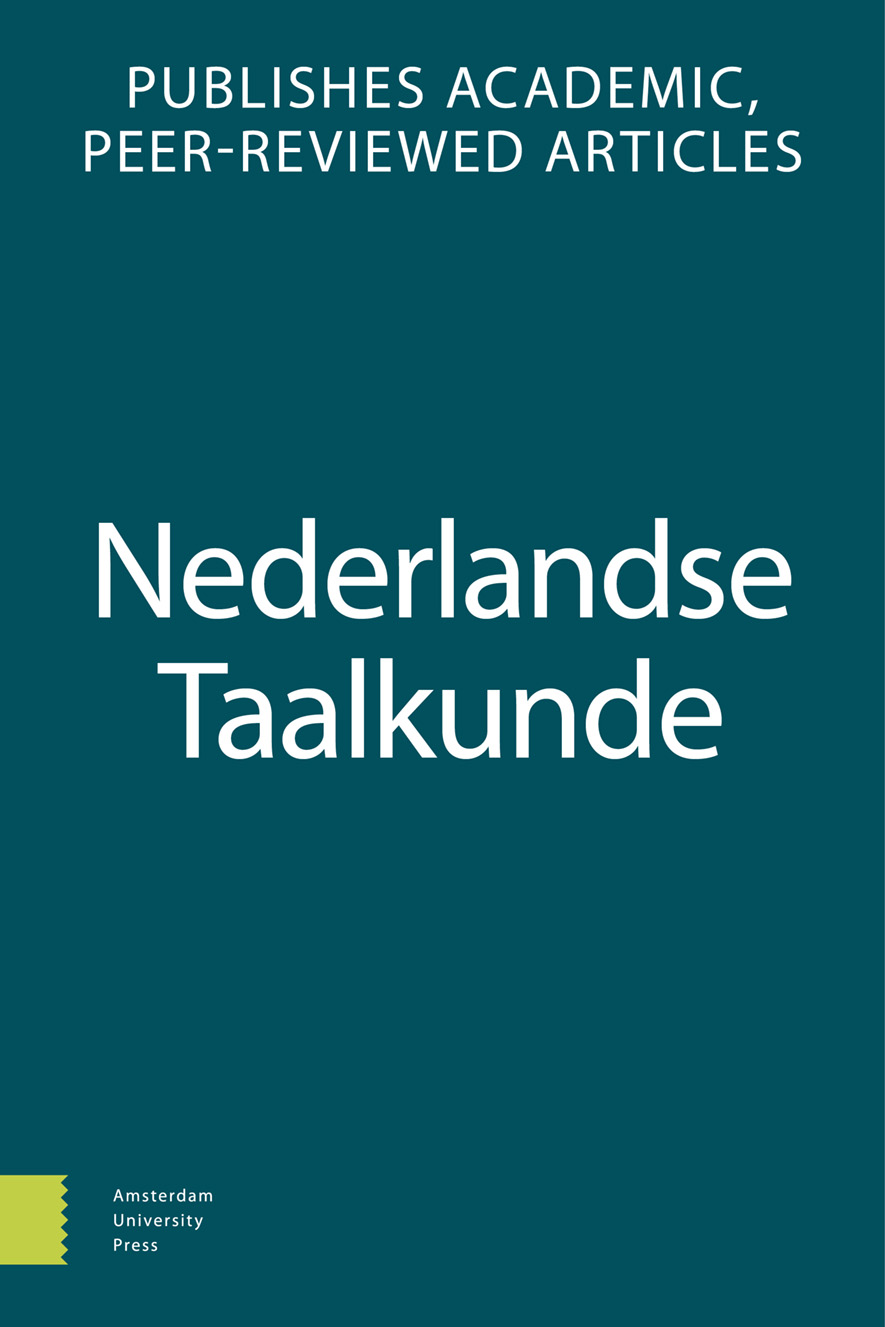-
oa Internal constraints on the use of gaan versus zullen as future markers in spoken Dutch
A quantitative variationist approach
- Amsterdam University Press
- Source: Nederlandse Taalkunde, Volume 22, Issue 3, Dec 2017, p. 359 - 387
Abstract
This paper provides a quantitative variationist analysis of the future markers gaan and zullen in modern spoken Dutch in the light of current discussion on grammaticalisation. In order to determine to what extent gaan has been grammaticalised, internal constraints on the distribution of gaan and zullen such as verb type, animacy of subject, grammatical person, clause type, sentence type and proximity of future reference are investigated, using Netherlandic and Belgian data from the Corpus of Spoken Dutch. The purpose of investigating constraints such as animacy of subject and proximity of future reference is to establish to what extent the behaviour of gaan is still determined by its lexical history (i.e. as a verb denoting motion towards an immediate goal), and results demonstrate that these two constraints persist in modern Dutch. Moreover, research on grammaticalisation in other languages has shown that grammaticalised markers can become specialised to certain morphosyntactic environments such as particular grammatical persons or types of clause. Indeed, it will be shown here that the use of gaan is favoured in subordinate clauses and non-first person utterances, which it has in common with English be going to. By contrast, zullen is shown to occur in pragmatically more nuanced contexts, indicated by the presence of modal particles.


